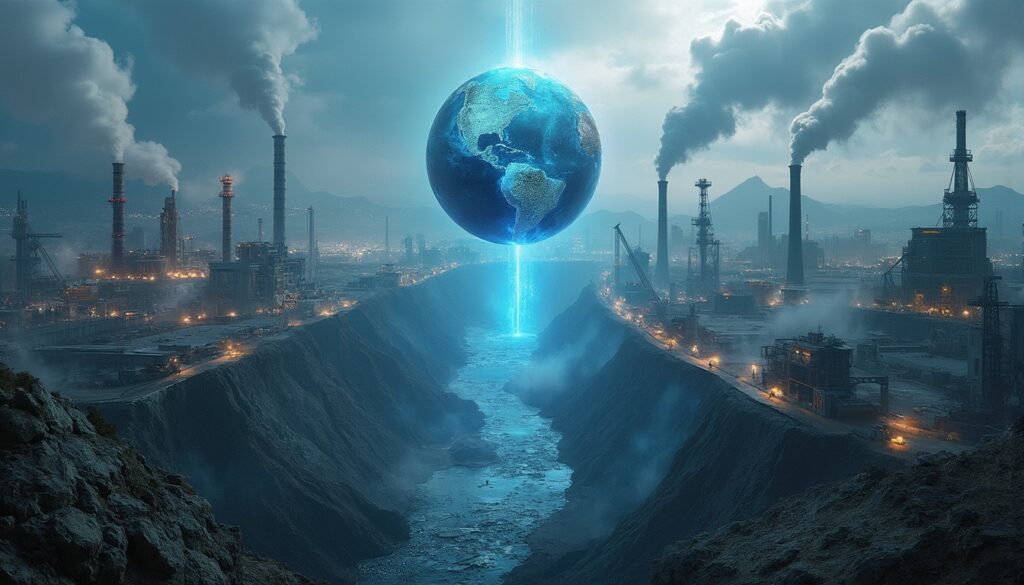The global landscape of zinc production changes 1995 to 2023 is a story of rapid transformation. Over the past three decades, the shift from Western dominance to Asian leadership has redefined the market. Changes in zinc production changes 1995 to 2023 have been dramatic, with major shifts in output across several countries.
China has emerged as the undisputed leader, increasing its production from 1,000,600 tons in 1995 to nearly 4,000,000 tons by 2023. This 300% growth contrasts starkly with Canada’s decline. Meanwhile, nations like India, Peru, and Bolivia have turned into new major producers, reflecting the dynamic nature of zinc production changes 1995 to 2023.
China’s dramatic rise is fuelled by rapid industrialisation and expansive infrastructure projects. The demand for galvanized steel in construction, automotive, and manufacturing has surged. Additionally, advanced digital innovations driving mining efficiency have transformed production methods, reducing energy consumption and costs.
Government policies in Beijing have provided strategic subsidies and tax incentives, which have further boosted production capabilities. These measures, along with streamlined permitting processes, have enabled rapid scalability in mining operations. This approach has allowed China to maintain a competitive edge in global markets.
Heavy investments in smelting capacity and modern processing technology have played a pivotal role. Particularly, hydrometallurgical processes have cut energy costs by nearly 40% compared with traditional methods. This technological leap is supported by recent research study that confirms significant efficiency gains in modern plants.
However, these rapid gains have environmental costs. Approximately 12% of Chinese zinc mines fail to meet emissions standards. This has placed increasing pressure on authorities to implement stricter regulations. The industry is also looking towards mining decarbonisation strategies to address these challenges sustainably.
Canada’s decline in zinc production is equally striking. Production plummeted from 1,121,172 tons in 1995 to around 250,000 tons in 2023—a 78% reduction. Major mine closures, including the Brunswick and Selbaie Mines, have left a significant gap. The closures removed operations that once contributed up to 800,000 tons annually.
Canada’s challenges are further compounded by diminishing ore grades. Ore grades fell from roughly 8% to 2.5%, resulting in unsustainable extraction costs. As new discoveries have become scarce, the country’s high production cost structure has made it difficult to compete with lower-cost producers from Asia and Latin America.
Environmental compliance costs in Canada have surged by about 22% over recent decades. While these regulations protect the environment, they have also placed economic burdens on producers. Canadian companies now struggle to balance these costs against the need to invest in more profitable metals such as gold and copper.
The impact on local communities has been severe. The decline in production has led to the loss of an estimated 5,000 jobs from a single mine closure. Mining communities once thriving have had to adapt to the loss of traditional industries. This dramatic collapse highlights the challenges faced by mature markets in a rapidly evolving global industry.
Several other countries have emerged as significant zinc producers. Peru, for instance, increased its production by 102% to reach 1,400,000 tons by 2023. The expansion of the Antamina Mine has played a key role in this growth, attracting nearly $2 billion in foreign direct investment between 2010 and 2023.
Australia has maintained stable production figures. From 937,000 tons, its output grew modestly to 1,100,000 tons, showcasing a balanced approach to mining regulation and investment. The country’s stable performance contrasts with Canada’s steep decline, offering valuable lessons in effective mining policy.
India’s journey is one of the most dramatic. Production surged over 5.5 times from 154,500 tons in 1995 to 860,000 tons in 2023. The pivotal privatisation of Hindustan Zinc Limited in 2002 ushered in an era of modernisation and efficiency. This growth is a vital part of zinc production changes 1995 to 2023 that redefines global supplies.
Key factors in India’s success include strategic investments and reforms in mining regulation. The country’s emphasis on modern management practices led to significant upgrades in production methods. Rapid urbanisation and the increased demand for galvanized steel have further propelled India’s growth.
The development of the Rampura Agucha Mine in Rajasthan stands out as a major milestone. Now the world’s largest zinc mine, it produces around 600,000 tons annually. This facility’s high-grade ore deposits have made it a world-class resource, supporting both domestic consumption and export markets.
Despite these advances, India faces environmental challenges as production increases. Approximately 30% of its zinc mines lack adequate wastewater treatment facilities. This shortfall underscores the need for sustainable practices in a market experiencing explosive growth, prompting discussions on esg challenges reshaping global mining.
Bolivia, another emerging producer, has more than tripled its output from 146,131 tons to 490,000 tons by 2023. This growth followed state-led reforms which emphasised national control over mineral resources. Under policies introduced during President Evo Morales’s tenure, Bolivia reinvested profits to expand production capacity significantly.
Kazakhstan has also made notable strides. Its zinc production doubled from 162,400 to 330,000 tons, leveraging long-standing Soviet-era infrastructure and modern upgrading measures. At the Zhezkazgan Mine, the implementation of advanced AI-based ore sorting technology has improved yields by around 18%.
The global production shift carries significant economic implications. The concentration of zinc production in fewer countries raises potential supply vulnerabilities. With China alone accounting for approximately 37% of global output, any disruption in its production could cause widespread price volatility in zinc production changes 1995 to 2023.
Price fluctuations have been stark. In 1995, zinc was roughly $1,050 per ton, but by 2023 it increased to nearly $3,200 per ton—a near tripling of value. Such volatility has forced manufacturers to explore alternative materials. For example, aluminum alloys have replaced zinc in around 12% of traditional applications.
The economic implications extend beyond prices. Zinc-dependent industries, such as construction, automotive, and manufacturing, together contribute an estimated $850 billion to global GDP. This interdependence underscores the strategic importance of zinc in national resource strategies and industrial planning.
Key economic factors can be summarised as follows:
- Supply chain vulnerabilities due to regional concentration.
- Significant price volatility affecting long-term planning.
- Shifts in global employment with new opportunities in emerging markets.
- Strategic reallocation of resources towards metals offering higher returns.
The shift in global production has also spurred changes in commodity cycles. This trend is evident in the emerging commodity super-cycle, which has reshaped supply chains and investment patterns worldwide. Such cycles continue to influence both market sentiment and industrial policy.
Environmental and sustainability concerns have increasingly influenced zinc mining operations. Stricter environmental regulations in developed nations now add an estimated 15-25% more to operational costs. These increased costs and lengthy permitting processes have prompted companies to explore energy-efficient and sustainable practices in their operations.
Recycling now accounts for approximately 35% of global zinc supply. Advances in recycling technologies are promising further gains in circularity. As secondary zinc production grows, the market for newly mined zinc may gradually shrink. This shift underscores the value of responsible resource management.
Leading companies are responding by implementing cutting-edge sustainability solutions. Water recycling systems can reduce freshwater usage by up to 60%. Additionally, carbon-neutral smelting pilots have demonstrated the potential to cut emissions by up to 50% in some operations. Sustainable practices are fast becoming a competitive necessity.
Energy consumption also remains a critical factor. Chinese smelters still consume about 30% more energy per ton compared to their European counterparts, though the gap is narrowing with new efficiency measures. These improvements help mitigate environmental impacts and enhance long-term production viability.
Recent innovations, such as bioleaching, are gaining traction in environmentally sensitive regions. In Peru, bioleaching has reduced water usage by nearly 40%, marking a step towards more sustainable zinc production methods. These advancements signal a growing convergence of economic and environmental priorities in metal extraction.
Global mining now faces the dual challenge of meeting growing industrial demand while embracing sustainability. As governments and industry leaders work together, the future of zinc production changes 1995 to 2023 appears set to balance economic ambition with environmental stewardship. Policymakers, investors, and producers will need to remain agile to navigate these evolving complexities.
Want to Stay Ahead of the Next Major Mineral Discovery?
Discovery Alert's proprietary Discovery IQ model instantly notifies investors about significant ASX mineral discoveries like zinc finds, providing actionable insights that could lead to substantial returns. Explore historic examples of exceptional outcomes on our dedicated discoveries page and start your 30-day free trial today to position yourself ahead of the market.




